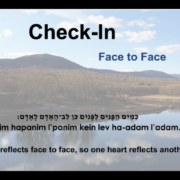A message from Rabbi Rachel – As we approach hybrid…
If you can’t see the embedded video, above, it’s here on YouTube. You can also read the text of the video below.
Dear CBI Community,
As we look toward hopefully offering hybrid services this summer, I’m here to share some of the challenges and opportunities involved in shifting from all-digital offerings to hybrid ones. Of course there’s the challenge of staying on top of changing CDC guidance! But aside from the medical, there are also practical, spiritual, and communal impacts to how we make that shift.
I’m part of two clergy groups that arose at the start of the pandemic. One consists of about 3000 Jewish clergy from across the denominations. The other is for clergy of all faith traditions, and has 7500 members. In both of these groups, we share questions, resources, and emerging best practices. What we’ve been doing at CBI draws on the cumulative wisdom of all of these folks.
When I lead prayer over Zoom, I screenshare slides that feature images and artwork and sometimes even video clips alongside the words of our prayers… and at strategic moments in the service, there’s a slide that reminds me to stop the screenshare so that we can all see each other’s faces, wave to each other, and remember that we’re connected in community together.

Some of us use the chat function in Zoom to connect with each other during services, chatting with each other via text, or sending a chat message to the whole room (for instance, if I ask people to share a blessing that they’re thankful for this week, or when I ask for names for healing.) Sometimes I call on people to lead a prayer from the place where they are.
One of the ways we’ve sought to sustain our community during the pandemic is through making our Zoom offerings as interactive as possible. Because of that interactivity, members and friends of CBI who live elsewhere or have moved away can join us not only in prayer but in seeing each others’ faces, texting each other messages, and being connected across distance.
As we approach the next phase of the pandemic and the return to some in-person prayer, one of the biggest questions is: how can we make services most meaningful and participatory both for the “Roomies” (physically present) and the “Zoomies” (participating remotely)? Is there a way to do so that truly serves both of these constituencies, and that “works” for both groups at once?
Once we’re back at the shul, it’s easy to share a service via Zoom / Facebook Live — but that’s a broadcast paradigm, not an interactive one. Those who are remote can’t participate as fully, and can’t share their faces or voices with each other or with those in the room. That’s how we used to stream high holidays. But it’s not interactive, unlike what we’ve done over this pandemic year.
Across the denominations, we’re all grappling with how the pandemic has changed how we do Jewish and how we constitute community. We’ve spent more than a year “making a minyan” from afar, spanning from North Adams to Florida to California. The tenth member of our minyan might be in another time zone! That changes our felt sense of what it means to be together.
It’s a paradigm shift for Jewish life everywhere. And we may not wholly understand its impacts until we can look back on this moment, five or ten or fifteen years from now. One thing that is clear is that this new way of constituting and connecting community opens doors for those who are disabled or homebound, and we need to figure out how to keep those doors open.
Some communities are now installing large screens in their sanctuaries, one to show the digital prayer materials (also shared over Zoom) and another to show the grid of all the faces participating on Zoom, so that those on Zoom can see who’s in the sanctuary and vice versa. Some schools operate that way now, and businesses too. Of course, that’s a major investment.
We don’t yet have answers on how best to do this. (As a recent essay from the Union for Reform Judaism points out, no one does — and they have wise thoughts on why we should be thinking in terms of “multi-access” offerings, not just “hybrid” ones.) But these are some of the questions that clergy across the denominations and across faith traditions are grappling with.
I know you’re probably eager to know what we’re going to do for the Days of Awe. I am too! The Board is exploring everything from tent rental, to screen(s) in the sanctuary, to whether it’s safe for people who are vaccinated and masked to sing together, to what’s best for our unvaccinated children and their families. Thanks to all who filled out our survey: your answers help us plan.
If you have thoughts about going forward, I welcome them. Please know that I always want to hear from you about what you want and need, or about whatever’s on your mind and heart.
For now, I wish you every blessing during this final week of the Omer, and I hope to see you at Shabbat services (at 10:30 ET this week!) and at Shavuot, starting 7:30pm on Sunday May 16.
Tradition says that the soul of every Jew who ever was and ever will be were all mystically together at Sinai to receive Torah. That’s what we’ll celebrate on Sunday night: the continuing revelation of Torah, and our togetherness across time and space. We’ll begin with evening services and Yizkor, and then enjoy diverse learning offerings until midnight.
See you at Sinai… and on Zoom at CBI!






